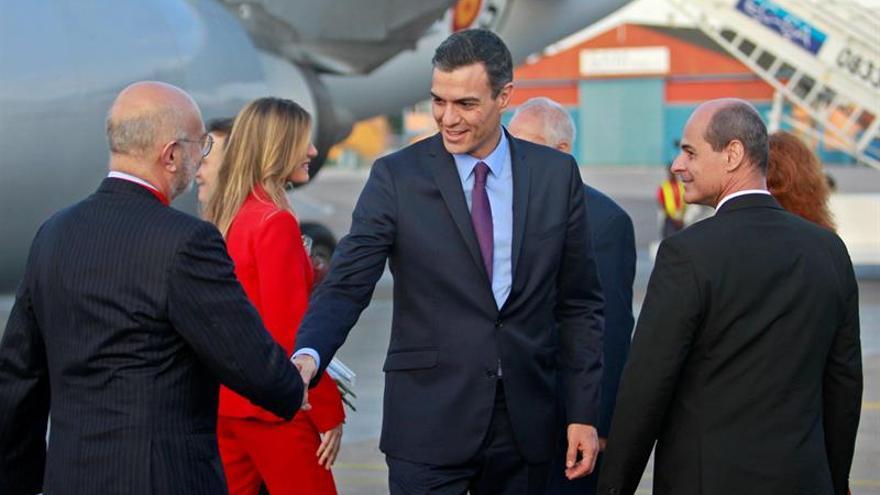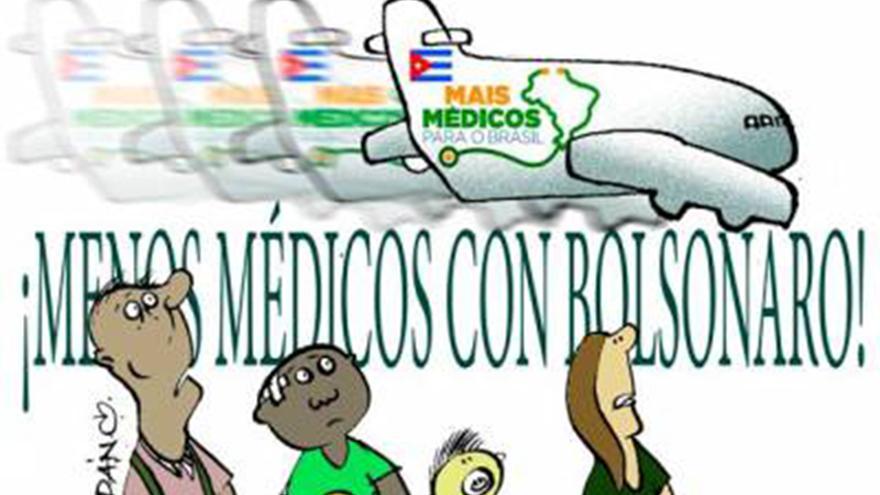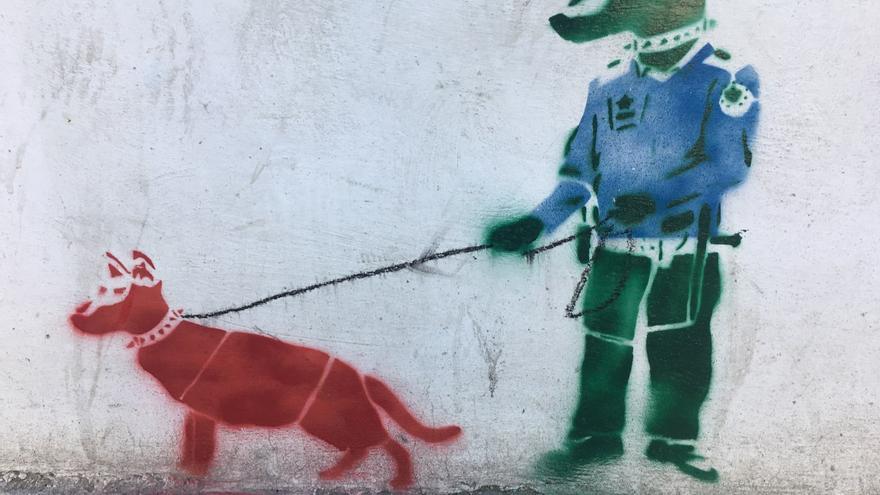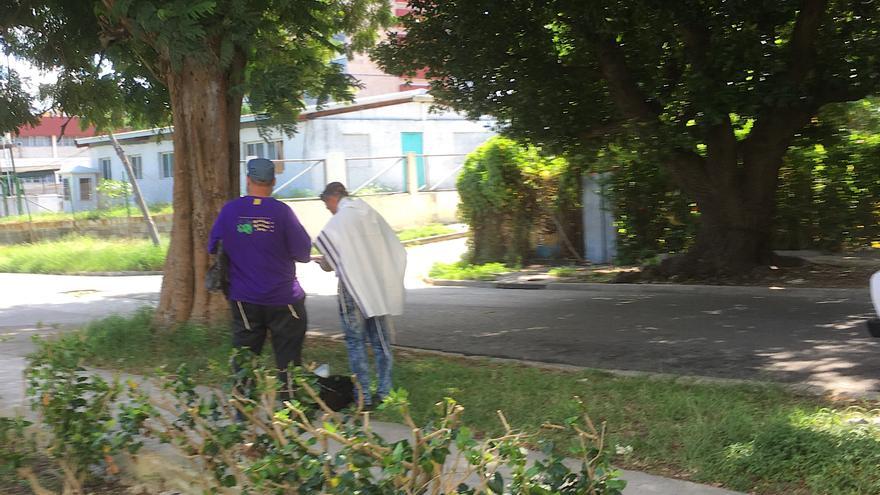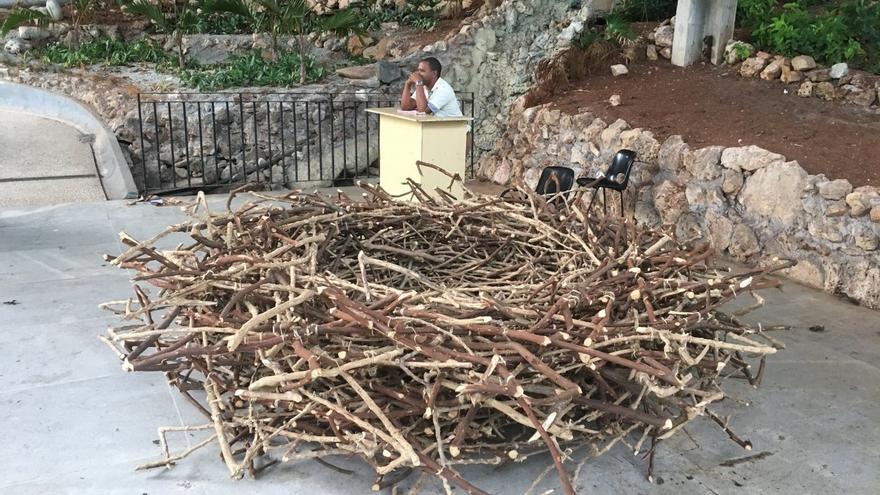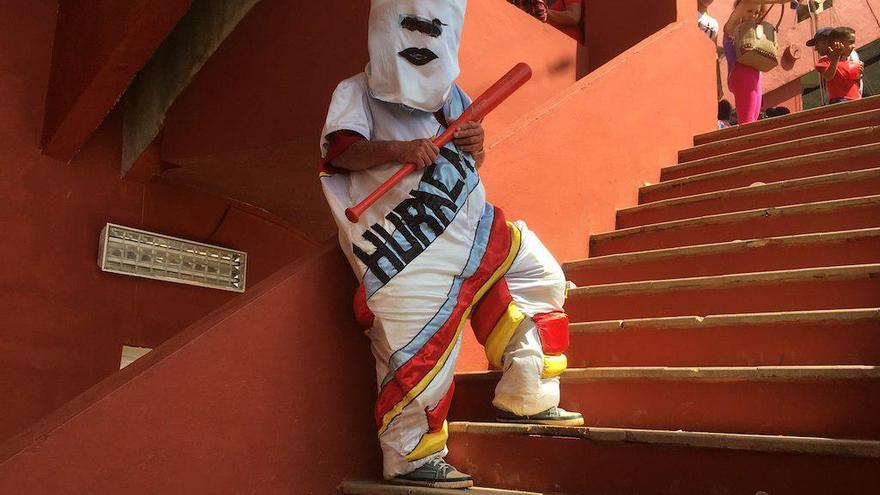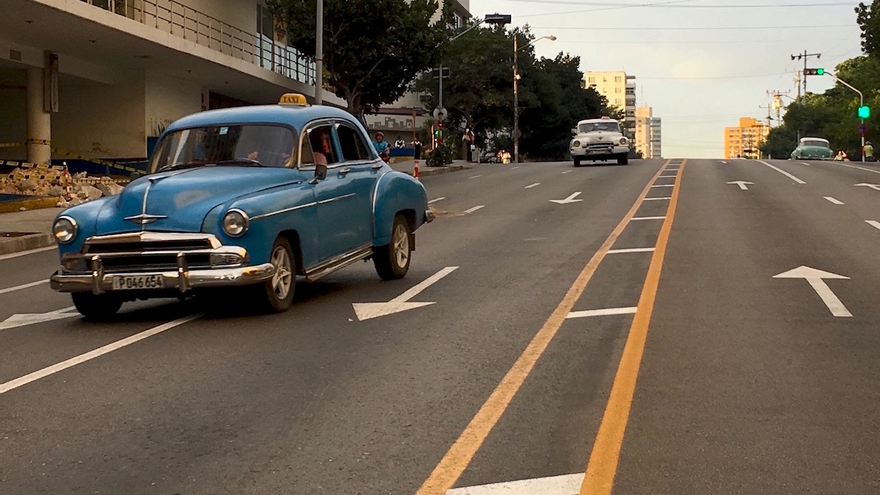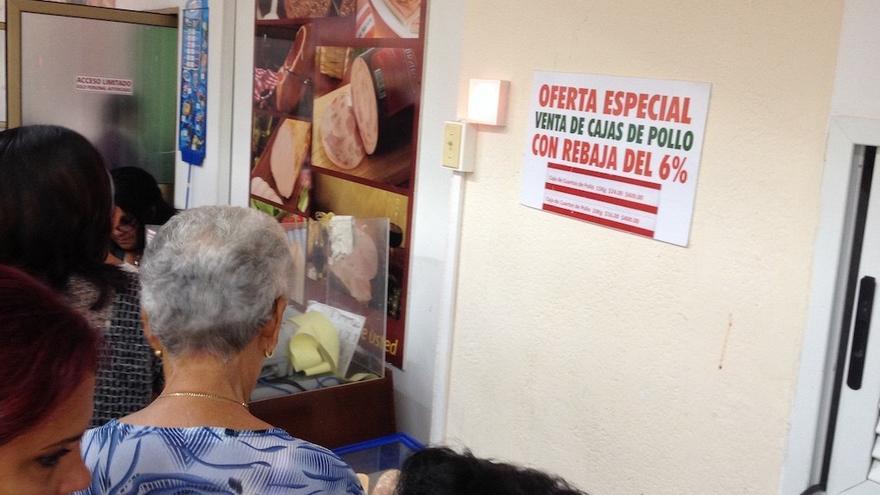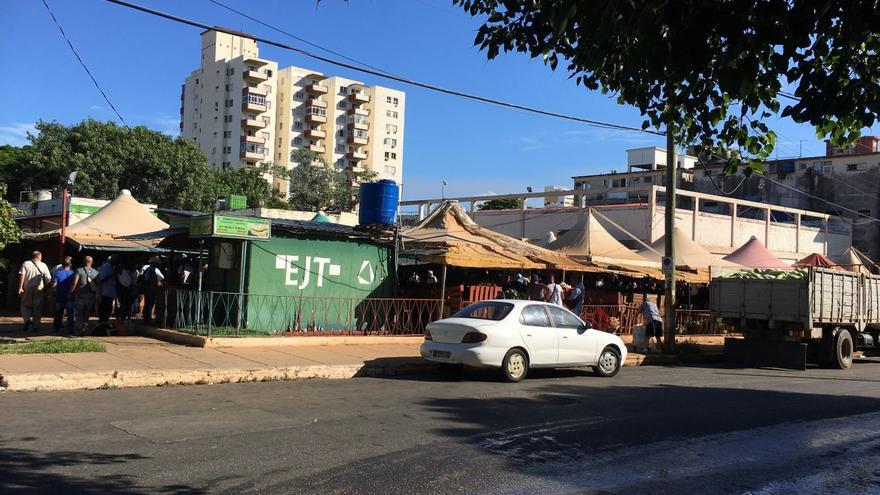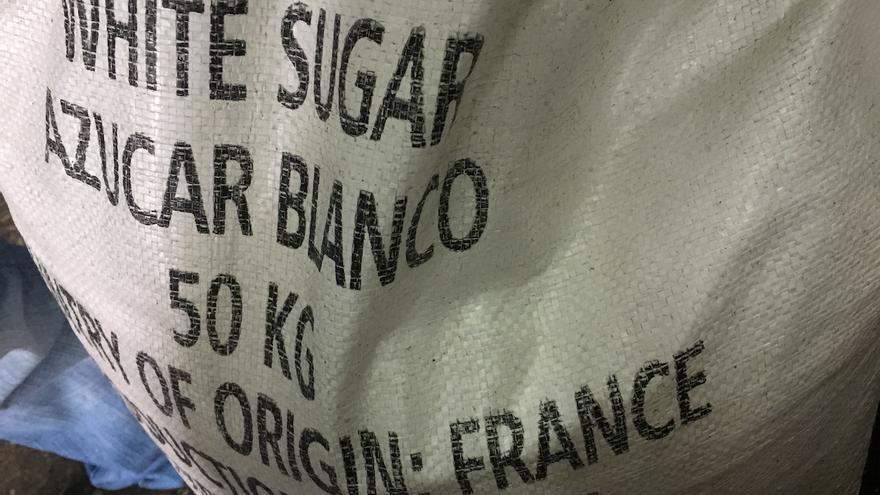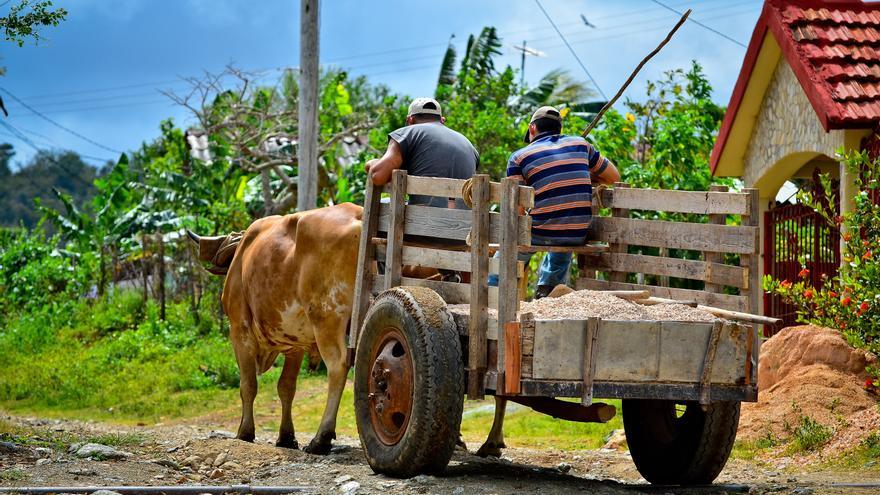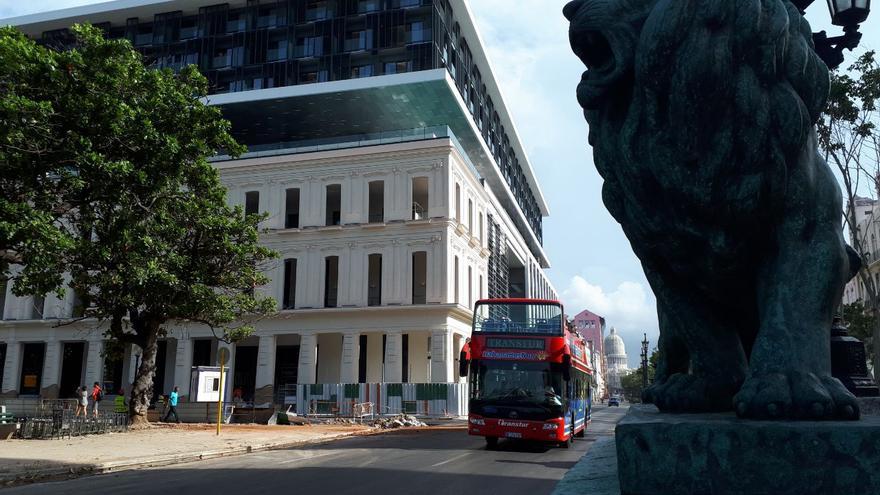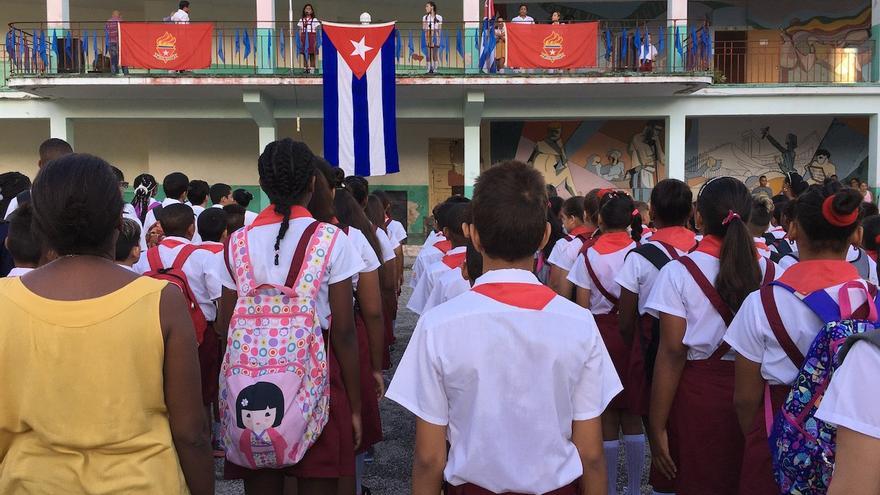The facade shines under the September sun and although one does not yet see the coming and going of tourists, the accommodation is already causing a stir. “In the last few days many important people have come to see it and participate in the inauguration,” says Carbonell, although “they don’t move much, they don’t walk this way,” he laments.
The housing complex where this retired Havanan has lived for 60 years is only meters from the impressive construction but they seem two worlds apart. “This is like the sun and the moon, day and night,” he believes. “Now these houses are looking more deteriorated because in comparison with this new thing everything seems much older.” continue reading
By “old” Carbonell doesn’t refer only to the age of the colonial style building where he lives with his wife and three children, but also to its facilities. “On this site the pipes collapsed years ago and all the water that we consume has to be taken in buckets from the cistern or carried to the rooms by our own power.”
However, the least of their problems is carryong the water from one part of the complex to another, the most difficult is getting it to the complex. “We have a supply once a week, maybe twice. The rest of the time you have to pay for pipas (water trucks) or take care of your needs elsewhere,” he maintains.
The retiree points out the places in the area where he frequently goes to use the bathroom. “In the Hotel Inglaterra there are good bathrooms and they aren’t such a pain about it, also in the Parque Central they have a good supply of toilet paper, but in the Telégrafo you can’t even enter because the security is really strict,” he explains.
The Grand Packard, developed by the Spanish company Iberostar Hotels & Resorts, will not have problems with water. This Monday the water trucks supplied it very early, in a routine carried out by all the hotels in the area, which has among the worst water shortages in Havana.
With ten stories and an exceptional view, the accommodation promises its visitors the chance to get to know an historical and well-trafficked part of the city. The shopkeepers in the area hope to benefit from the clients who venture out to eat and have a few drinks outside of the hotel facilities at a time when the drop in tourism worries everyone.
“We are on the same sidewalk and we’ll get a slice of this cake,” predicts an employee at the nearby private cafeteria La Tatagua. The place, small and well designed, has a view of the Paseo del Prado and a wifi connection that clients can use as they eat. “Although the Packard has all types of luxuries, there are always those who want to touch reality with their own hands,” he adds.
Reality is a vague concept in one of the most touristy areas of the country. On one hand, there are the spectacular old cars, many of them convertibles, that offer trips through the most famous areas of the urban landscape, but a few meters away are buildings, miracularly still standing, in which dozens of families are packed.
The floor of the central promenade has recently been polished and this week various workers continued working on the streetlights that line the route. “The whole area has made itself beautiful for the occasion, especially the green areas just in front of the hotel,” assures one of the guards, in a perfect suit and tie, who watches over the entrance.
Property of Gaviota, the state-owned hotel business controlled by the Armed Forces, the Packard has come to underline the contrasts in a area where the hotel Manzana Kempinski was already viewed as “something fallen from the sky,” as Carbonell jokes.
“This was a ruin, because before that the Biscuit hotel was here, which was inaugurated in 1911 and which my grandfather told me was a marvel,” insists María Eugenia, who lives in another housing complex on the opposite side of the street “with a direct view of the new hotel. Now I wake up and when I look out the window I feel like I’m in another country,” she remarks ironically.
The Packard, with 312 rooms, has wide glass windows, sharp corners, and an entranceway integrated into the shady promenade, typical of the area. Its impressiveness and size — it occupies almost an entire block — have few rivals in the area.
The facade, however, has its detractors. “Although part of the original exterior structure has been preserved, the majority of the elements are modern and break with the dominant aesthetic in the area,” believes Laura Fumero, graduate in architecture, who works with a small private design firm.
“The height of the entryway seems to make the building look big, but my major concern has to do with the demand for energy, water, and other resources that this hotel will have when it is fully operational. It is not much use to have something so luxurious in a place with general infrastructure that’s over a century old,” she points out.
The architect goes further and calls into question the need for hotels of “high volume.” The decision “would be more accepted if we were experiencing a dramatic increase in tourism, but that’s not the case,” she specifies. “It’s also a matter of a type of accommodation aimed at high income visitors, but right now we’re experiencing a fall in the number of Americans who come and they are the ones who are, for the most part, most likely to spend more,” she believes.
In the first half of the year global tourism numbers, about 2.5 million visitors, went down more than 5%. Taking into account only American tourists, the drop in that time period was about 24%. Between January and March, 240 groups of Americans cancelled their reservations due to the new restrictions that Washington has placed on trips to the Island.
In June, the nearby Manzana Kempinski was down about 20% in occupancy, according to testimonies given to 14ymedio by various employees. “It’s a difficult gamble to make, because in this area there is already a large saturation of rooms and we are in a difficult moment,” confirms a tour operator who preferred to remain anonymous. Despite that, the general director, Xavier Destribats, assured that the Swiss hotel group that manages it has various other projects in conjunction with the state-owned Gaviota.
“Every inauguration increases the pressure and urgency to attract more tourism, but we don’t see another boom happening like what happened with the rapprochement of Barack Obama,” explains the specialist in reference to the diplomatic thaw between the two nations that began in December 2014. “It would have to change somewhat drastically for the number of tourists to reach what it needs to be,” he affirms.
Further from the worries of architects and tour operators, the Grand Packard hotel’s closests neighbors, like María Eugenie and Gerardo Carbonell, fear that the building’s demand for resources will harm their delay routines.
“We will have to get used to the noise of the water trucks from early in the morning and the coming and going of supplies, security in the area area will increase and that will affect the black market,” he points out.
“Many people are afraid that this way of opening luxury hotels will continue and that Calle Prado will end up completely dedicated to tourism,” she warns.
Above their heads, on a brilliant terrace filled with attractive offerings, the first curious people look toward the horizon and once in while turn their gazes down.
Translated by: Sheilagh Carey
______________________________
The 14ymedio team is committed to serious journalism that reflects the reality of deep Cuba. Thank you for joining us on this long road. We invite you to continue supporting us, but this time by becoming a member of 14ymedio. Together we can continue to transform journalism in Cuba.
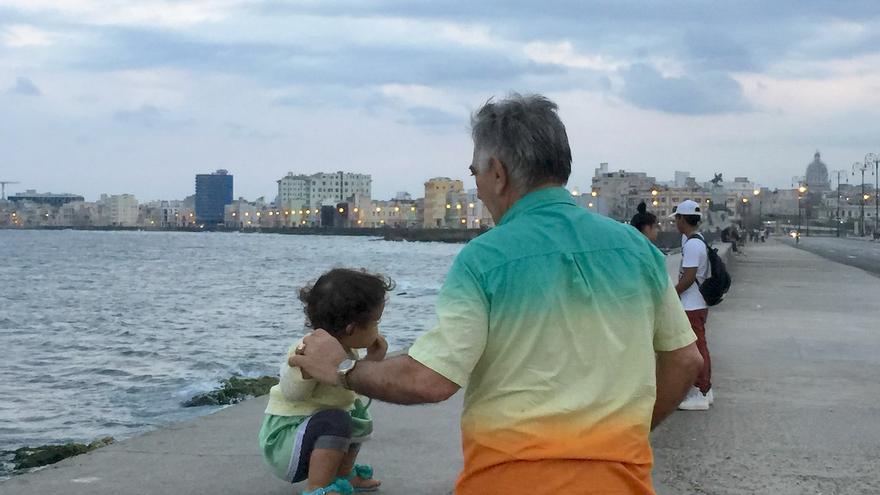
![]() 14ymedio, Marcelo Hernández, Havana, November 29, 2018 — Preparing snacks, picking up the girls after classes, and staying on top of keeping the school uniforms clean. A good part of the daily routine of Clara Rojos, 74, is focused on her two granddaughters, aged 10 and 11, who she has taken care of since their mother emigrated to Miami. From there she is trying to bring them over via a family reunification process that has taken more than five years.
14ymedio, Marcelo Hernández, Havana, November 29, 2018 — Preparing snacks, picking up the girls after classes, and staying on top of keeping the school uniforms clean. A good part of the daily routine of Clara Rojos, 74, is focused on her two granddaughters, aged 10 and 11, who she has taken care of since their mother emigrated to Miami. From there she is trying to bring them over via a family reunification process that has taken more than five years.


